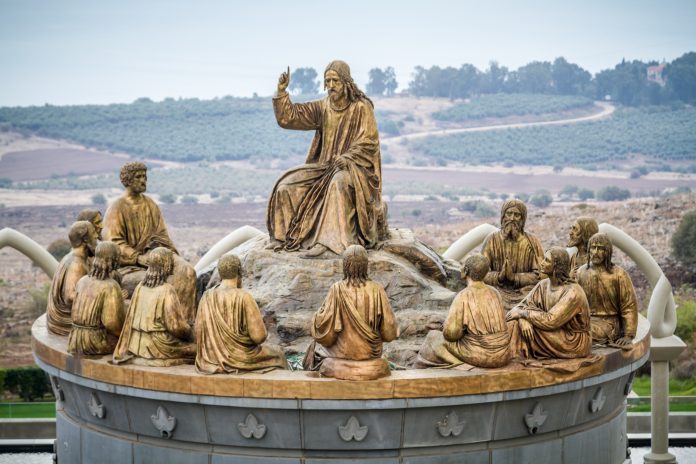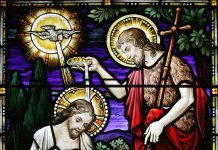
by Cullen Schippe
Back in my college days, I minored in education. One of my professors stressed (seemingly at every opportunity) that the best learning takes place when the students are motivated to learn. He would describe at length what we refer to now as the teachable moment.
Beth Lewis, a noted elementary education professional has given a succinct definition of the teachable moment. She writes: “A teachable moment is an unplanned opportunity that arises in the classroom where a teacher has an ideal chance to offer insight to his or her students. It is not something that you can plan for; rather, it is a fleeting opportunity that must be sensed and seized by the teacher.”
Two thousand years before, in the “classroom” of the greatest Teacher, the days and weeks after his release from the tomb—conquering sin and death—were replete with teachable moments. During those days, the groundbreaking teaching of Jesus was galvanized and dramatized for his followers as a catechesis and for the world as evangelization—the spreading of the good news.
A few examples prove the point. When Jesus first appeared to the gathered disciples, his opening words were, “Peace be with you” (John 20:19). Then he gave them the great message of forgiveness, “Whose sins you forgive are forgiven” (John 20:23). Later came his message to Thomas, “Blessed are those who have not seen and have believed” (John 20:29). After a miraculous catch of fish and a breakfast on the shore, Jesus instructed Peter, “If you love me feed my lambs … feed my sheep” (John 21:16-17).
Perhaps one of the greatest demonstrations of catechetical method came on a walk from Jerusalem to Emmaus. Jesus joined two grieving disciples. He accompanied them on their journey, he empathized with their sadness, and then he broke open the Scriptures for them so that they might understand. When pressed he stayed for supper and they recognized him in the breaking of the bread. Immediately the disciples raced back to Jerusalem to share the good news (Luke 24:13-35).
In an appearance to the Apostles in Jerusalem, “he opened their minds to understand the scriptures” (Luke 24:45) and informed them that the good news would be preached to all nations starting in Jerusalem. He promised them the Holy Spirit who would counsel, help, and inspire them.
In his last appearance, he gave the great commission to “Go and make disciples of all nations, baptizing them in the name of the Father, the Son, and the Holy Spirit” (Matthew 28:19).
The Easter events are still great catechetical opportunities. The readings at Mass after Easter—especially the Gospels—demonstrate the excitement, joy, and great hope of the resurrection. Each Sunday of Easter is a teachable moment that can be “sensed and seized” by catechists.
Spend time with your students experiencing and repeating these great events. Let the truth of the words and actions of Jesus seep into their hearts. Help them to see the great joy that is the promise of eternal life. Celebrate with them their baptism and initiation into the body of Christ. Your joy and conviction will help fulfill what the weeks of Easter are meant to be—an opportunity to relive and relish the story of salvation.
Then on Pentecost, we will all hear again Peter—filled with the Spirit—proclaim the good news to the whole world. His echoing of the prophet Joel sets the stage for the spread of God’s reign. “I will pour out a portion of my spirit upon all flesh. Your sons and daughters shall prophesy, your young men shall see visions, your old men shall dream dreams” (Acts 2:17).
If we seize the opportunities afforded by the Eastertide celebrations to motivate our learners, we will also ensure that at every Eucharist, gathered as active members of the community, together we will all recognize Jesus in the breaking of the bread.
Cullen Schippe served in Catholic publishing for over 40 years.
Copyright 2016, Bayard, Inc. All rights reserved. This article is protected by United States copyright and other intellectual property laws and may not be reproduced, rewritten, distributed, redisseminated, transmitted, displayed, published or broadcast, directly or indirectly, in any medium without the prior written permission of Bayard, Inc.
This article was written by the Catechist Staff and appeared in Catechist magazine, July 2016.
Image Credit: alefbet/Shutter Stock 559112293



